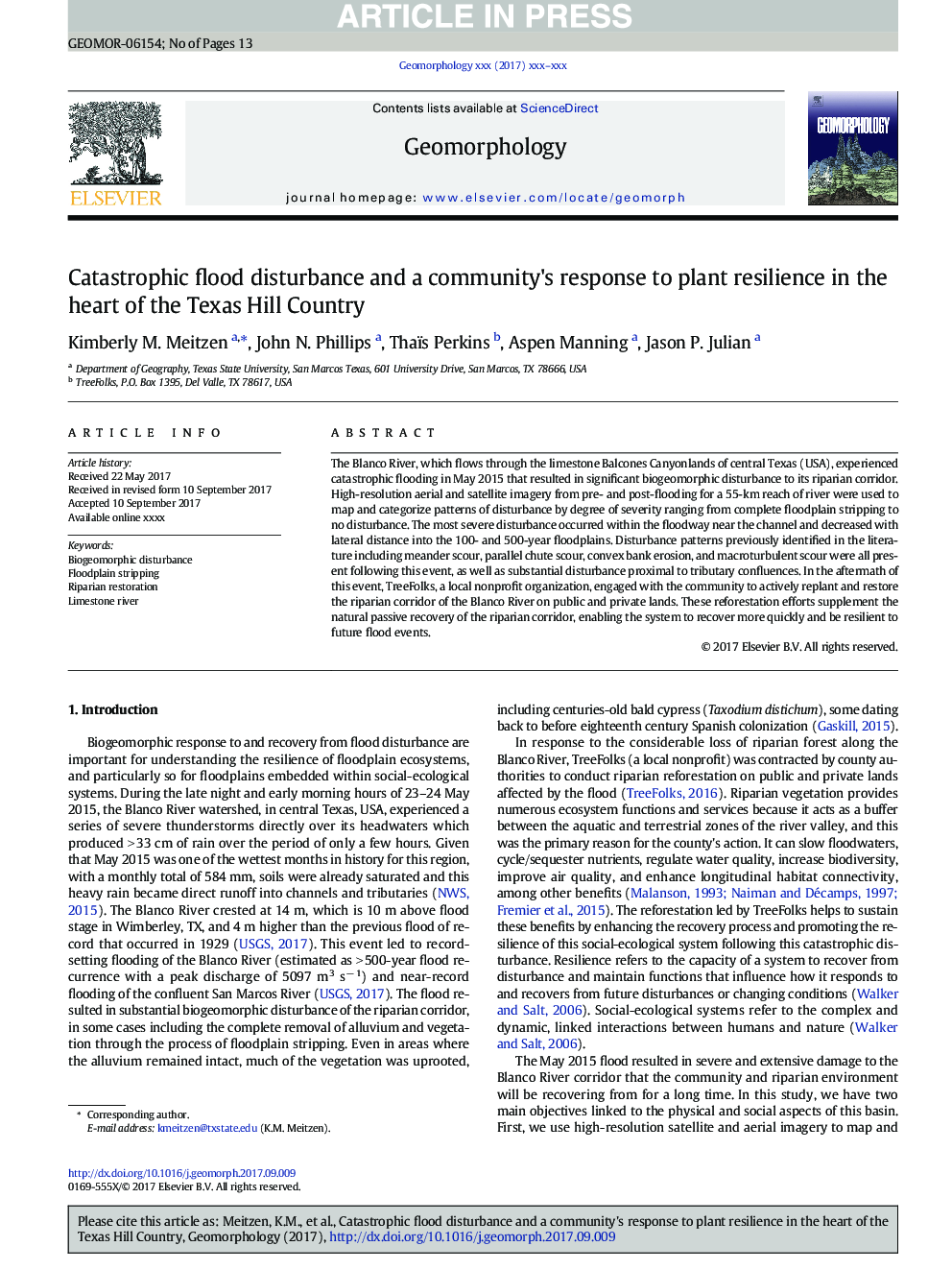| Article ID | Journal | Published Year | Pages | File Type |
|---|---|---|---|---|
| 8908151 | Geomorphology | 2018 | 13 Pages |
Abstract
The Blanco River, which flows through the limestone Balcones Canyonlands of central Texas (USA), experienced catastrophic flooding in May 2015 that resulted in significant biogeomorphic disturbance to its riparian corridor. High-resolution aerial and satellite imagery from pre- and post-flooding for a 55-km reach of river were used to map and categorize patterns of disturbance by degree of severity ranging from complete floodplain stripping to no disturbance. The most severe disturbance occurred within the floodway near the channel and decreased with lateral distance into the 100- and 500-year floodplains. Disturbance patterns previously identified in the literature including meander scour, parallel chute scour, convex bank erosion, and macroturbulent scour were all present following this event, as well as substantial disturbance proximal to tributary confluences. In the aftermath of this event, TreeFolks, a local nonprofit organization, engaged with the community to actively replant and restore the riparian corridor of the Blanco River on public and private lands. These reforestation efforts supplement the natural passive recovery of the riparian corridor, enabling the system to recover more quickly and be resilient to future flood events.
Keywords
Related Topics
Physical Sciences and Engineering
Earth and Planetary Sciences
Earth-Surface Processes
Authors
Kimberly M. Meitzen, John N. Phillips, Thaïs Perkins, Aspen Manning, Jason P. Julian,
